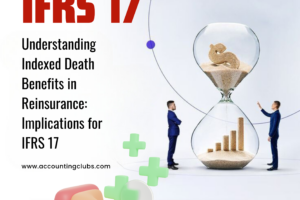Maximizing Portfolio Value: The Art of Credit Risk Adjustments

In the intricate world of finance, where every decision holds weight and every transaction carries risk, the concept of credit risk adjustments on a portfolio basis stands as a pivotal cornerstone of risk management strategies. In this comprehensive exploration, we delve deep into the nuances of credit risk adjustments, unraveling the intricacies of calculation methods, allocation techniques, and valuation methodologies to maximize portfolio value and fortify financial resilience.

Understanding Credit Risk Adjustments:
At its core, credit risk adjustment entails assessing and mitigating the potential losses stemming from credit risk – the risk that a counterparty fails to fulfill their financial obligations. Traditionally, credit risk adjustments were calculated at the individual contract level, but as financial markets evolve and transactions become increasingly complex, the need for a portfolio-centric approach arises.
Transition to Portfolio Basis:
The transition to calculating credit risk adjustments on a portfolio basis signifies a paradigm shift in risk management practices. Instead of assessing risk at the contract level, multiple contracts involving a single counterparty are aggregated under a master netting agreement. This agreement consolidates the credit risk exposure into a net position, allowing for a more holistic assessment of risk across the portfolio.
Allocation Methods:
Once the portfolio is established, the next step is to allocate credit risk adjustments to individual transactions. This allocation process is crucial, as it determines how the adjustments are distributed among the various contracts. Different allocation methods exist, including the relative fair value approach, relative credit adjustment approach, and in-exchange or ‘full credit’ approach. The chosen method must be consistent, transparent, and aligned with the entity’s risk profile and objectives.
Valuation Techniques:

Valuation lies at the heart of credit risk adjustments. It involves estimating the price at which an orderly transaction would occur between market participants under current market conditions. Various valuation techniques exist, including the market approach, cost approach, and income approach. Each technique offers unique insights into fair value measurement and requires careful consideration of observable and unobservable inputs.
Real-World Application:
To illustrate the practical implications of credit risk adjustments on a portfolio basis, consider the case of Company A, a fictional entity with equity investments in Company B and Company C. Company A must navigate through a maze of valuation techniques, weighing the merits of the market approach against the income approach to determine the fair value of its investments. This real-world scenario underscores the importance of selecting the most appropriate valuation methodology based on the specific characteristics of the investments and market conditions.
Now Take a Look on Credit Risk: Unveiling 10 Key Insights in Portfolio Management
In the ever-evolving realm of finance, credit risk remains a central concern for entities navigating through complex portfolios. Let’s delve into 10 pivotal insights that shed light on effective credit risk management strategies in a portfolio landscape.
1. Portfolio Optimization:
- Aggregating exposures under a master netting agreement enhances portfolio optimization.
- Entities can streamline their risk management processes and allocate resources more efficiently across various portfolios.
2. Risk Diversification:
- Calculating credit risk adjustments on a portfolio basis promotes risk diversification.
- Entities can spread their credit risk exposure across multiple contracts, reducing the impact of individual defaults or market fluctuations.
3. Regulatory Compliance:
- Compliance with regulatory requirements is paramount in the financial industry.
- Adopting a portfolio-centric approach ensures adherence to regulatory frameworks such as Basel III and enhances transparency in reporting.
4. Strategic Decision-Making:
- A portfolio-based view of credit risk facilitates strategic decision-making.
- Entities can align their risk management strategies with their overall business objectives and long-term financial goals.
5. Proactive Risk Management:
- Monitoring credit risk on a portfolio basis enables proactive risk management.
- Entities can identify emerging risks and implement preemptive measures to mitigate potential losses.
6. Investor Confidence:
- Investor confidence is essential for accessing capital markets and maintaining liquidity.
- A robust portfolio-centric approach to credit risk management enhances investor confidence and strengthens relationships with stakeholders.
7. Technological Advancements:
- Technological advancements play a crucial role in portfolio-based credit risk management.
- Entities can leverage data analytics, machine learning, and artificial intelligence to enhance risk assessment and decision-making processes.
8. Evolving Market Dynamics:
- Market dynamics are constantly evolving, requiring entities to adapt their risk management strategies accordingly.
- A portfolio-centric approach enables entities to navigate changing market conditions and maintain resilience in the face of uncertainty.
9. Collaborative Partnerships:
- Collaboration with industry peers and counterparties is essential for managing credit risk effectively.
- Entities can establish collaborative partnerships to share best practices, insights, and resources for mitigating credit risk.
10. Continuous Improvement:
- Continuous improvement is essential for staying ahead in the dynamic financial landscape.
- Entities should strive for continuous refinement of their portfolio-based credit risk management processes to adapt to evolving market trends and regulatory requirements.
Example Forward:
Consider a multinational financial institution that operates in diverse markets and engages in a wide range of financial transactions. By transitioning to a portfolio-based approach to credit risk management, the institution can streamline its risk management processes and gain a holistic view of its credit risk exposure.
In practice, the institution aggregates exposures under master netting agreements, grouping together contracts with the same counterparty. This allows for a consolidated assessment of credit risk, with adjustments calculated on a portfolio basis. The institution utilizes sophisticated valuation techniques, such as Monte Carlo simulation or scenario analysis, to estimate credit risk adjustments accurately.

Furthermore, the institution regularly conducts stress tests and scenario analyses to evaluate the resilience of its portfolios under various market conditions. This proactive approach enables the institution to identify potential vulnerabilities and implement preemptive risk mitigation strategies.
Overall, the adoption of a portfolio-centric approach to credit risk management enhances the institution’s ability to monitor, analyze, and mitigate credit risk effectively. It instills confidence in investors, regulators, and stakeholders, positioning the institution for sustainable growth and resilience in an ever-evolving financial landscape.
Conclusion:
In conclusion, mastering credit risk adjustments on a portfolio basis is essential for optimizing risk management strategies and maximizing portfolio value. By transitioning from individual contracts to a holistic portfolio-centric approach, entities can gain a deeper understanding of their credit risk exposure and make informed decisions to mitigate potential losses. With careful consideration of allocation methods, valuation techniques, and real-world applications, organizations can fortify their financial resilience and navigate the ever-evolving landscape of credit risk with confidence and agility.
Stay tuned! For More Insightful Discussions On Optimizing Portfolio Performance And Mitigating Financial Risks.
Tag:accounting, ias, ifrs, solutions











